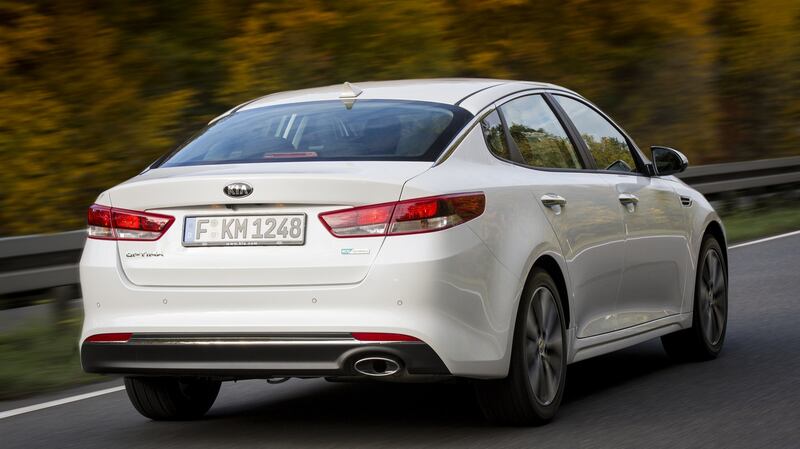It's ironic that when two cars are so closely related to each other – as are the Kia Optima and the Hyundai i40 – that one should fare so much better than the other. The i40 is far ahead of the Optima in Ireland in terms of sales, as the Optima struggles to keep up with the marketing push behind Hyundai's family offering. So, with the i40 having been around for a while, it will be interesting to see if the new Optima can make up some more ground.
It certainly deserves to, as it is a better-looking car than the i40 and can even put it up to the bigger and more established names when it comes to specification and spaciousness.
The logic behind the Optima’s design is to offer a premium car at reasonable prices. Unfortunately, the Optima doesn’t quite manage to pull this off.


There is an undoubted feeling of space and comfort when you get into the car but you won’t have a real feeling of premium build quality when you get out of it. The same, however, can be said of many Japanese and Korean cars that feel less solidly constructed than their European counterparts.
Entry-level diesel
When it comes to price though, these cars can have a real advantage. The entry-level 1.7-litre diesel – an improved version of an existing unit – may not be the most refined, whether from the external or internal perspective, but it delivers plenty on the open road. It goes on sale in January at €27,950 with 17” alloy wheels; a 7” navigation screen; lane assist; half-leather seats; cruise control and LED lights.
The car drives well in the city but one is conscious of a slight thrashing from the engine that settles down on motorways, though is still noticeable. Also noticeable is the vagueness of the steering when it is compared with that of competitors. Otherwise, handling and grip are good and more assured than one might expect. The use of more high- strength steel has given the car a more rigid feel.
What gives the Optima an advantage is its presence on the road. It looks long and low and it has quite a sporty profile. On the inside, the dashboard has a slightly slab- like profile and stitching that runs along the moulding could have been used and highlighted more effectively to give it a quality feel.
Generous space
The interior space is generous and does help to add to the Optima’s quality credentials. Adding 10mm to the length of the wheelbase and re
shaping the seats has allowed for much more legroom for rear-seat passengers. The wider body and higher roofline have also added to extra space and comfort. The boot is also generous, though it won’t match the Skoda Superb for cavernous capacity.
The 1.7 diesel engine will be the standard and only diesel offering for the Optima on the Irish market, the other option being a 2.0-litre petrol. It will be available in three levels of specification. The second level will have full leather seating, heated memory seats and xenon lights. It will cost €31,450. A third level of specification will offer extras such as a full sunroof, 10 speakers, smart key and an 8” screen. It will cost €34,450. Wireless phone charging is available only on automatic versions to allow the phone to sit in a console- mounted charging bay, though there must be a way around this for the convenience non- automatic drivers.
The Optima has come a long way and its new looks should certainly be able to attract new customers, as will the level of standard equipment. It isn't a Jaguar but it doesn't have a Jaguar price tag either. Nor is it a Passat or Skoda Superb but it is no longer as far behind them either.










